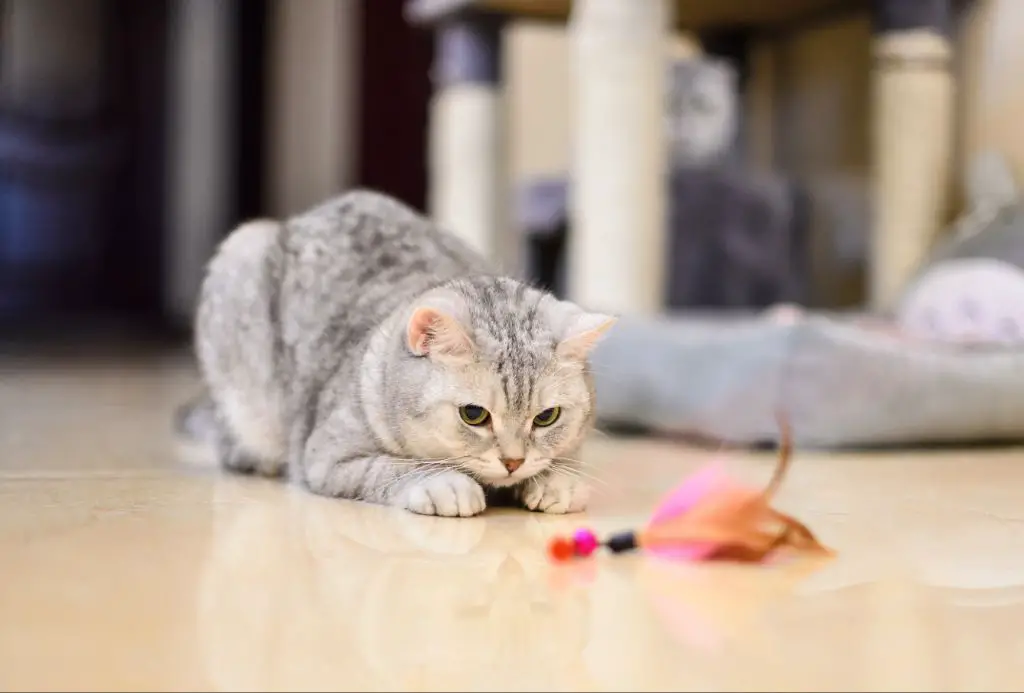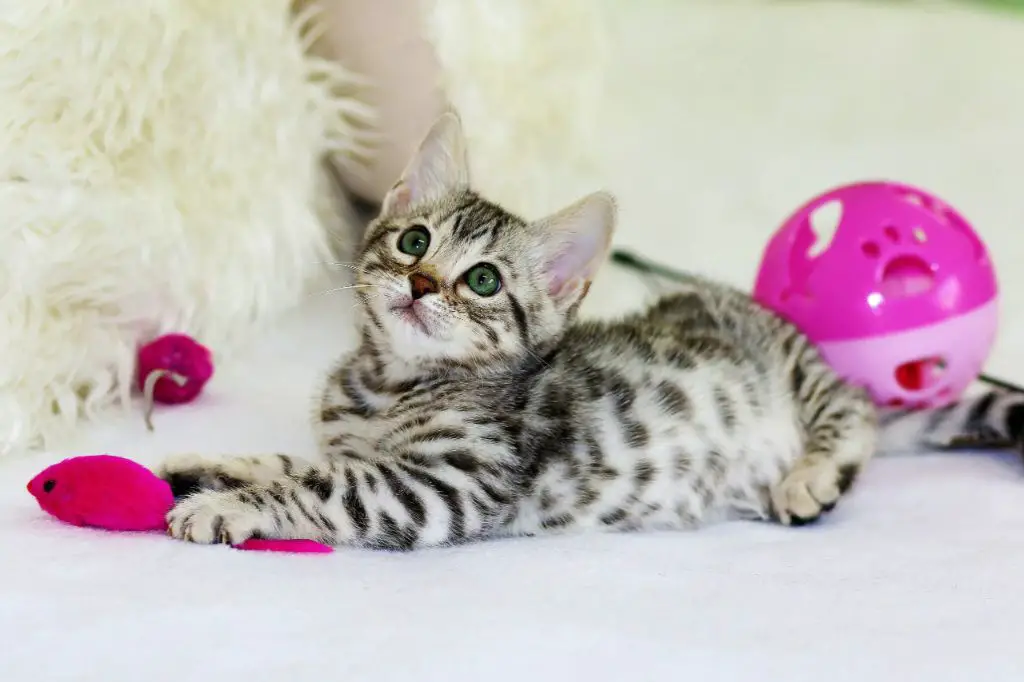What Are Cat Zoomies?
Cat zoomies are sudden and intense bursts of energy and playfulness in cats. The technical term for this behavior is “frenetic random activity periods” or FRAPs. During a zoomies episode, a cat will start running around the house at top speed, jumping on and off furniture, racing up and down stairs, spinning in circles, rolling on the floor, and exhibiting other energetic and erratic behaviors.
Zoomies often begin without warning. One minute a cat may be sitting calmly, and the next they are tearing through the house in a frenzied burst of energy. These episodes typically last between 5 to 15 minutes, after which the cat will stop just as suddenly as they started and resume their normal relaxed behavior.
While zoomies may seem crazy to us humans, for cats this is a completely normal behavior. It is thought zoomies are a way for cats to release pent up energy and emotion, similar to a “power burst” in young children. Zoomies are more common in younger cats and kittens, but cats of any age can experience them.
So next time your cat goes on a tear through the house, rolling, jumping and racing around, just enjoy the zoomies! It’s a sign of a happy, healthy cat just being a cat.
Other Names for Cat Zoomies
People have come up with all kinds of creative and humorous nicknames to refer to cat zoomies, given how common and eccentric this behavior can be. Here are some of the most popular slang terms:
- Cat crazies
- Kitty zoom-zoom
- Midnight madness
- Kitty scrambles
- Fur rockets
- Nighttime nutties
- Mad half hours
- Wilding out
- The crazies
- Psycho time

On Reddit and other forums, you’ll see people mention “FRR” which stands for “feline racing rockets.” Some will even anthropomorphize the experience from the cat’s perspective and say things like “I had the zoomies” or “a case of the zoomies.” Whatever you call it, these turbo boost bursts of energy and sprints around the house are a common feline phenomenon.
Why Do Cats Get the Zoomies?
There are several possible reasons cats experience the zoomies:
Pent up energy is the most common cause. Cats sleep for the majority of the day, conserving energy for hunting or other activities. When cats have been resting for an extended period, they can build up excess energy that needs an outlet. The zoomies provide a way for them to burn off all that stored up energy quickly.
Playfulness or excitement can also trigger zoomies. Some cats may get the zoomies when they are feeling especially playful. The zooming, darting, and mad dashing helps satisfy their urge to play. Zoomies are also associated with states of high excitement, so events like mealtime, guests arriving, or returning home can get cats so worked up that they start zooming.
Other potential zoomie triggers include territoriality, stress relief, and youthful energy. Overall, the zoomies represent a natural behavior for cats to expend pent up physical and emotional energy in bursts of sprinting, jumping, and wrestling.
Sources:
https://www.dailypaws.com/cats-kittens/behavior/common-cat-behaviors/cat-zoomies
When Are Zoomies Most Common?
Zoomies often occur at times when a cat has built up excess energy that needs to be released. Many cat owners notice zoomies happening more frequently at night or after naps during the day when cats have been resting for awhile.
Cats tend to be most active at dawn and dusk when their natural prey would be out and about. With domestic cats, this means they often get the “night crazies” or “evening zoomies” when their instincts tell them it’s time to hunt even though they don’t need to. After long naps during daylight hours, cats may also awaken with pent-up energy that turns into a case of the zoomies.
According to this article, cat zoomies most often happen in the early evening or late at night. The zoomies can last from a few minutes up to half an hour or longer as cats expend their built up energy in short bursts of running, jumping, pouncing and playing.

So in summary, zoomies are most common when cats have been inactive for awhile and have excess energy to burn. Night time or after naps are prime zoomie times when cats are suddenly ready to play and release their wild side.
Zoomies Triggers
There are several potential triggers that can cause cats to suddenly get the zoomies:
- Playtime – Many cats will get a burst of energy and zoom around after playing with toys or interacting with their owner. The stimulation from play triggers their prey drive.
- Catnip – One of the most common zoomies triggers is exposure to catnip. The herb has an intoxicating effect on cats that often causes hyperactivity.
- Eating – Some cats may frantically run around after eating a meal. The food energy seems to translate instantly into zoomies energy.
- New environments – Unfamiliar surroundings can overstimulate a cat’s senses and lead to zooming as a reaction.
- Mood swings – Sudden changes in a cat’s mood or stress levels can also precede a zoomies episode.
- Greeting owners – Many cats zoom wildly to greet their owners at the door after time apart.
While individual triggers vary, playtime, catnip, food, and greeting owners tend to be the most common stimuli for cat zoomies. Identifying any patterns may help owners anticipate and handle kitty zooming behavior.
Age and Zoomies
Younger cats, especially kittens, are much more likely to experience zoomies than older cats. According to Four Paws, kittens and juvenile cats under 2 years old get the zoomies frequently as they have an abundance of energy and curiosity to explore their surroundings.
As kittens grow into adults, their energy levels start to stabilize and the frequency of zoomies often decreases. However, zoomies don’t necessarily stop as cats mature. Adult cats can still periodically get the zoomies, though usually not as intense or prolonged as in kittens.
Some sources suggest cats may experience more zoomies when they are understimulated or bored. Kittens especially need lots of playtime and environmental enrichment, so zoomies may indicate they need more interactive play or activities during the day. Ensure kittens get adequate physical and mental stimulation through play sessions, toys, cat trees, and more.
While zoomies are perfectly normal kitten behavior, if an adult cat suddenly begins exhibiting more frequent or intense zoomies, it could signal an underlying medical issue. Consult a vet if your mature cat’s personality changes or zoomies become excessive.
Managing Cat Zoomies
While zoomies are a normal part of cat behavior, excessive or disruptive zoomies can be frustrating for owners. Here are some tips for managing zoomies:
Schedule regular interactive playtime during the times when your cat tends to get zoomies. Wear them out with wand toys, laser pointers, and chase games. This gives them an appropriate outlet for their energy.
Provide climbing surfaces like cat trees, shelves, and wall-mounted cat walkways. Cats can zoom vertically as well as horizontally!
Consider treats, praise, or play as a reward when zoomies calm down. This reinforces the behavior you want.

Distract with toys when zoomies start up. Wave a wand toy or roll balls to redirect the energy.
Stay calm and try not to discipline or punish zooming. This can make cats anxious or frustrated, worsening the behavior. Remaining relaxed helps zoomies pass quickly.
Make sure your cat is spayed/neutered. Intact cats tend to be more hyperactive.
Rule out medical causes like stress, lack of enrichment, or pent-up energy if zoomies are excessive. Consult with your vet if needed.
While zoomies can be disruptive, remember that this is natural cat behavior, not misbehavior. Staying patient and providing adequate exercise, play and vertical space can help keep zoomies under control.
Zoomies vs. Medical Issues
Zoomies are typically a normal behavior in cats and are not cause for concern. However, in some cases, frequent or prolonged zoomies can resemble certain medical conditions that require veterinary attention.
For example, hyperthyroidism is a condition where the thyroid gland produces too much thyroid hormone, accelerating a cat’s metabolism. This can make cats restless, hyperactive, and prone to zooming around. Other symptoms include increased appetite, weight loss, vomiting, and diarrhea. If zoomies become excessive or are accompanied by these other symptoms, a veterinary exam is advised to test thyroid levels.
Urinary tract infections or inflammation can also cause discomfort that leads to zooming behavior. A UTI causes frequent urination, bloody urine, crying during urination, and excessive licking of the genital area. Zooming around may be a response to the pain. These require antibiotic treatment from a vet.
In older cats, cognitive dysfunction syndrome can cause increased vocalization, anxiety, and aimless zooming or pacing. If this persists, medication may help reduce the dementia-like symptoms. Consult a vet to rule out medical issues if zoomies are frequent or combined with other behavioral changes.
While zoomies themselves are harmless, accompanying symptoms could indicate an underlying condition. Monitor your cat’s activity levels, appetite, litter box habits, and interactions. Seek veterinary advice if any physical or behavioral changes arise along with episodes of zoomies.
Fun Zoomies Videos
Watching cats suddenly sprint and skid around the house for no apparent reason is hilarious! Here are a few fun videos of cats getting a case of the zoomies:
This video captures a kitten who gets a major case of the zoomies, running and sliding around the hardwood floors. So cute!
Here’s an adorable compilation of different cats getting the zoomies in all sorts of situations. There are some epic sprint and slides in here!

This video shows several cats zooming around the house and then promptly passing out afterwards – a common zoomies sequence!
The Joy of Cat Zoomies
Many cat owners find joy and amusement in watching their cats experience zoomies. The random bursts of frantic sprinting, jumping, and playing that characterize zoomies are simply a natural feline behavior. As one Redditor commented, “Running and playing is a sign of joy.” For cats, zoomies are an expression of happiness and energy.
While zoomies may seem silly or excessive to humans, for cats they are a way to release pent up energy and excitement. According to pet experts, zoomies are most common in younger cats and kittens who want to play. But cats of any age can experience them when they are feeling especially energetic or stimulated. Ultimately, zoomies are just a quirky feline behavior that reveals a cat is feeling content. As a cat owner, try to relax, enjoy the show, and take delight in your cat’s joy.

